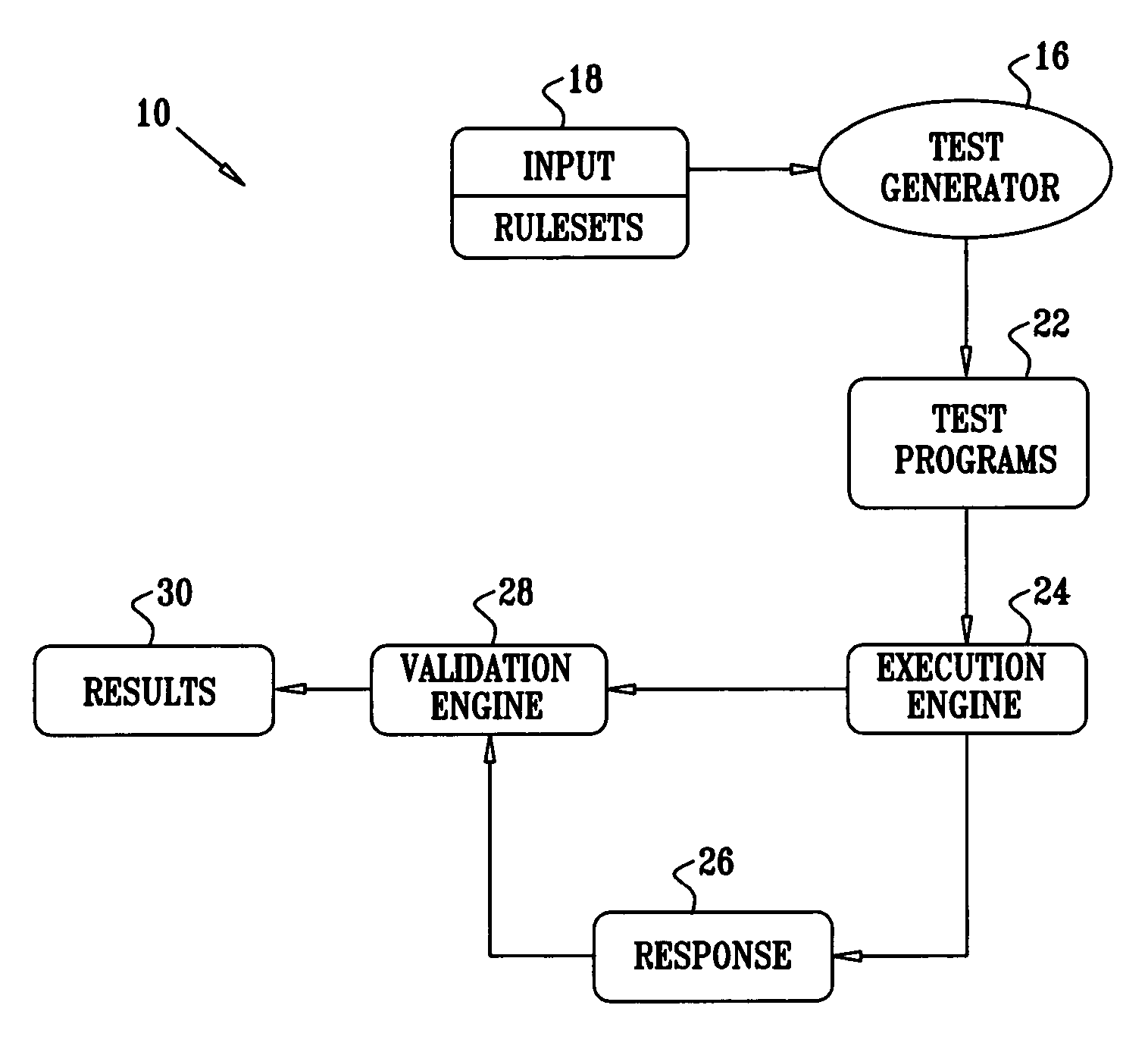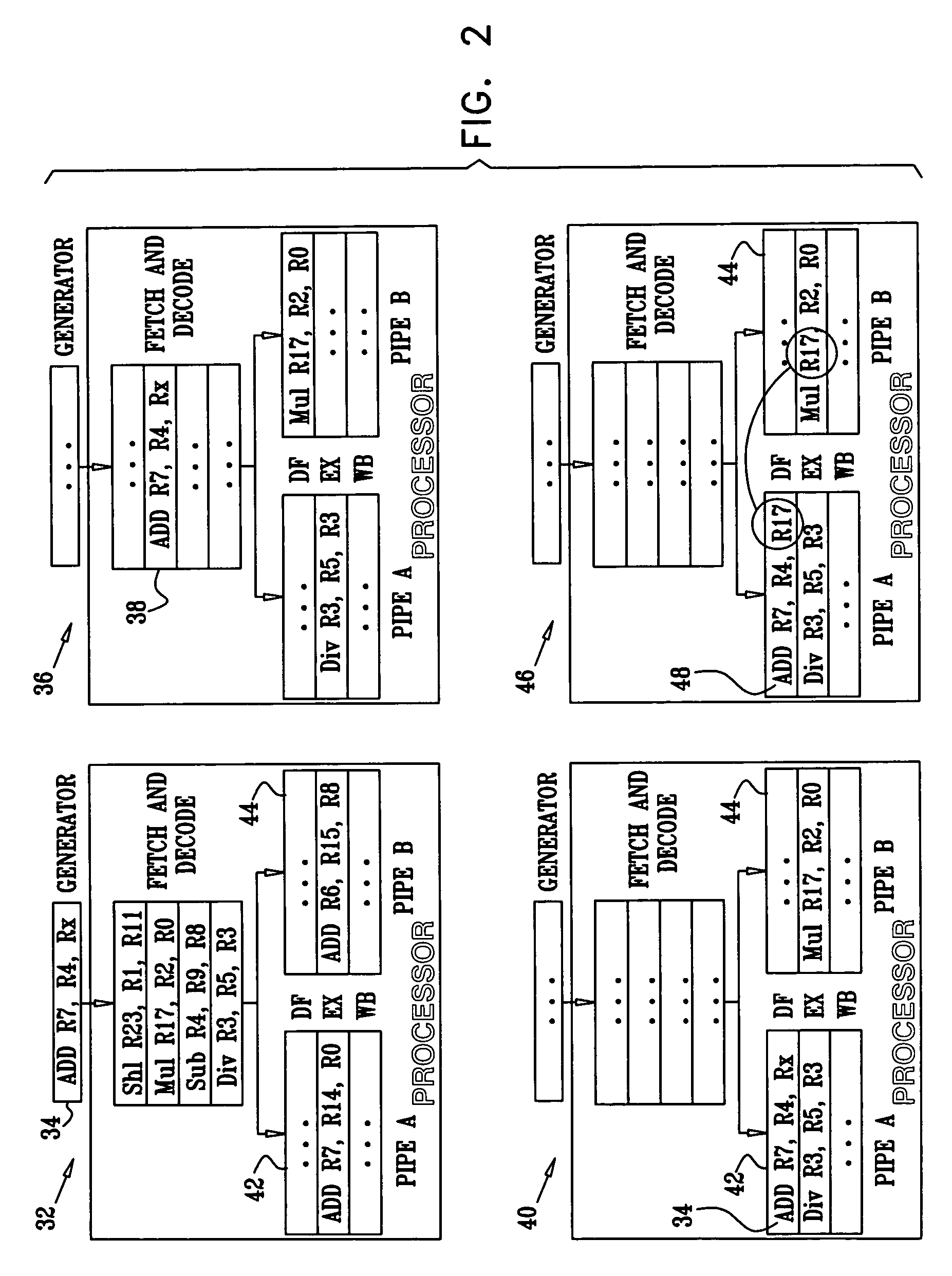Late binding of variables during test case generation for hardware and software design verification
a technology of hardware and software design verification and test case generation, applied in the field of design verification, can solve the problems of no longer being generated inputs and the state of the design, and achieve the effects of improving the quality and rapidity of test coverage, reasonable performance penalties, and significantly improving test coverag
- Summary
- Abstract
- Description
- Claims
- Application Information
AI Technical Summary
Benefits of technology
Problems solved by technology
Method used
Image
Examples
example 1
[0092]The method disclosed with reference to FIG. 3 has been tested using the Odette Verification Environment, details of which are available from the European Electronic Chips & Systems design Initiative, 2 Avenue de Vignate, Parc Equation, 38610 Giéres, France. The Odette Verification Environment provides verification support for object-oriented designs. It is built on top of the SystemC class library, available from Open SystemC Initiative, 1177 Branham Lane #302, San Jose, Calif., 95118-3766. The current prototype has been implemented outside the simulation kernel of SystemC. Therefore, it supports late binding only for a small set of types, namely objects and data-members of objects that are built-in C++ types.
[0093]Reference is now made to FIG. 5, which is a high level block diagram of an I / O device 84, the design of which was verified using the current prototype in order to evaluate the effectiveness of the late binding technique and its ability to improve test coverage. The ...
example 2
[0110]The following pseudocode illustrates one mode of operation of the software verification system 98.
[0111]
input x ... ...Much later first use of xif (x == 87654 ) then {Show it to a user ORShow it to a generator}
[0112]Here the generator is context-aware. It knows that if x is used in a condition, generate values such that in one case x==87654 is true and in another case the condition is false. So with high probability the generator generates x as 87654, which otherwise would have negligible probability. This obviously improves the testing.
[0113]
Second execution.input x ... ...Much later first use of x, which is different from the first execution.if (x == y ) then ... ...
[0114]In the second execution, use of the variable x does not occur in same location in the program as in the first execution, as it depends on other inputs. Assume that y is now 99. The generator will put x=99 with a high probability of correctness, (as the user would).
[0115]The binding of the variable x is...
PUM
 Login to View More
Login to View More Abstract
Description
Claims
Application Information
 Login to View More
Login to View More - R&D
- Intellectual Property
- Life Sciences
- Materials
- Tech Scout
- Unparalleled Data Quality
- Higher Quality Content
- 60% Fewer Hallucinations
Browse by: Latest US Patents, China's latest patents, Technical Efficacy Thesaurus, Application Domain, Technology Topic, Popular Technical Reports.
© 2025 PatSnap. All rights reserved.Legal|Privacy policy|Modern Slavery Act Transparency Statement|Sitemap|About US| Contact US: help@patsnap.com



